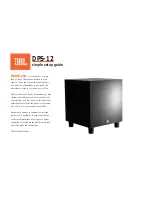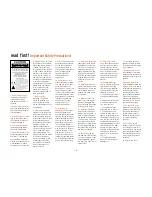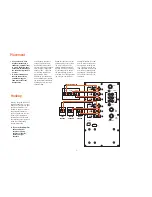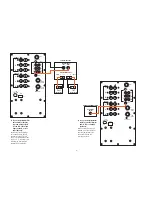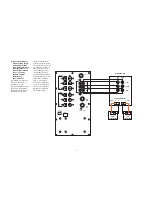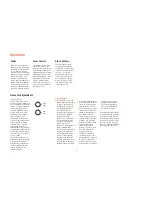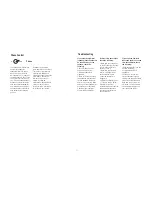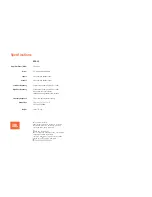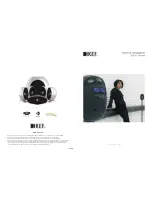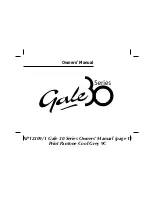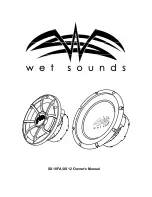
– 7 –
The Phase Control determines
whether the subwoofer
speaker’s piston-like action
moves in and out with the
main speakers, 0°, or opposite
the main speakers, 180°. There
is no correct or incorrect set-
ting. Proper phase adjustment
depends on several variables
such as subwoofer placement
and listener position. Adjust
the phase switch to maximize
bass output at the listening
position.
Phase
0
180
Phase Control
Remember, every system,
room and listener is different.
There are no right or wrong
settings; any setting you
choose will result in excellent
performance. Should you
decide to fine-tune your
system for optimum
performance, be patient and
trust your ears. It will be
worth the effort involved to
fully “tweak” your system.
Troubleshooting
If you used the high-level
(speaker) inputs and there is
no sound from any of the
speakers, check the
following:
• Receiver/amplifier is on
and a source is playing.
• Powered subwoofer is
plugged in.
• Check all wires and connec-
tions between receiver/ampli-
fier and speakers. Make sure
all wires are connected. Make
sure none of the speaker wires
are frayed, cut or punctured.
• Review proper operation
of your receiver/amplifier.
If there is low bass output,
check the following:
• Make sure the connections
to the left and right “Speaker
Inputs” have the correct
polarity (+ and –).
• Make sure that the sub-
woofer is plugged into an
active electrical outlet.
• Powered subwoofer is
plugged in.
• Adjust the crossover point.
• If you are using a Dolby
Digital/DTS receiver or
processor, make sure that the
subwoofer adjustments on
the receiver/processor are
set up correctly.
If you used the line-level
inputs and there is no sound
from the subwoofer, check
the following:
• Receiver/amplifier is on and
a source is playing.
• Powered subwoofer is
plugged in.
• Check all wires and con-
nections between receiver/
amplifier and subwoofer. Make
sure all wires are connected.
Make sure none of the wires
are frayed, cut or punctured.
• Review proper operation of
your receiver/amplifier.

